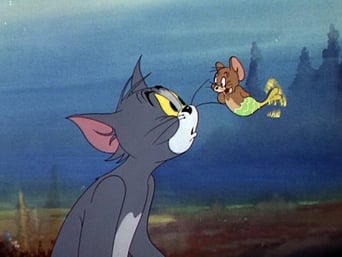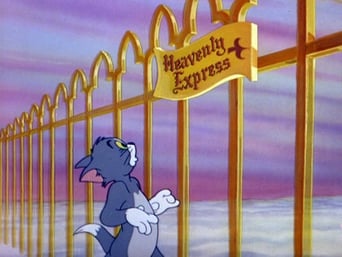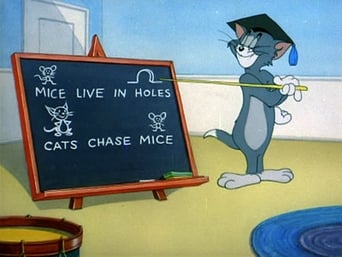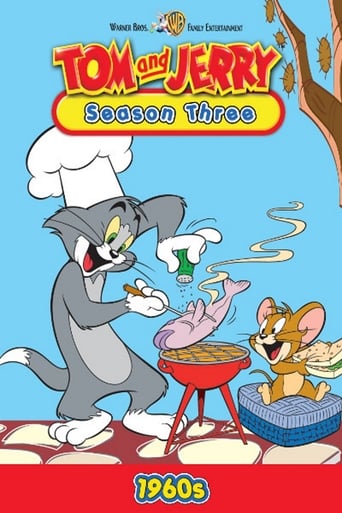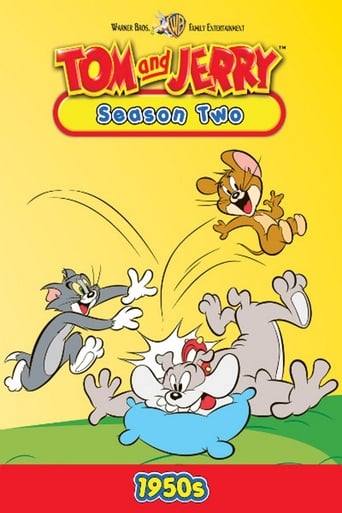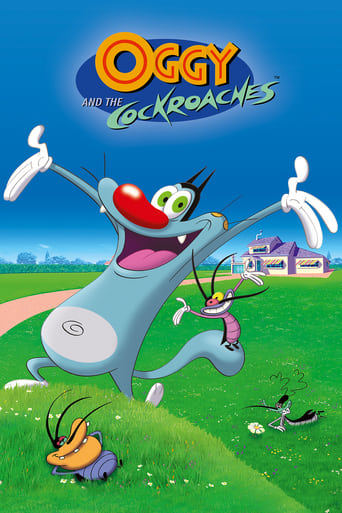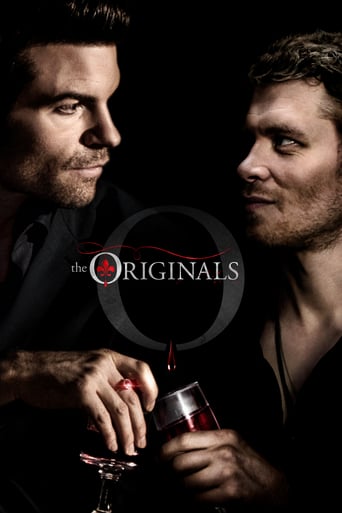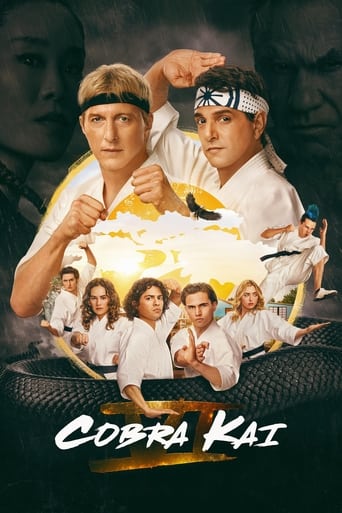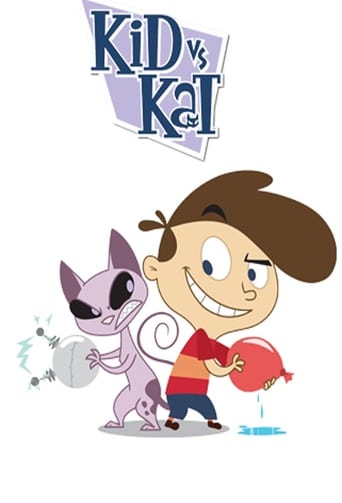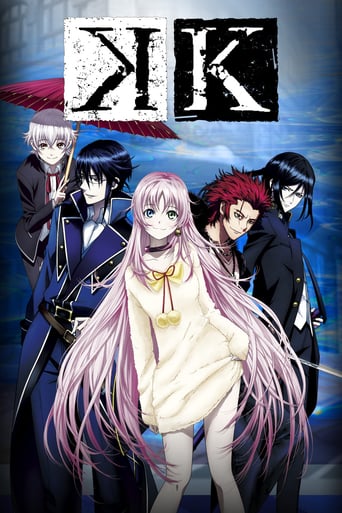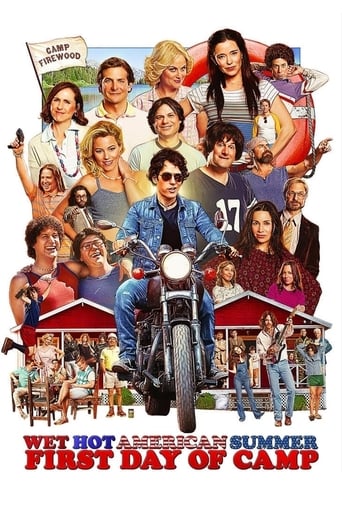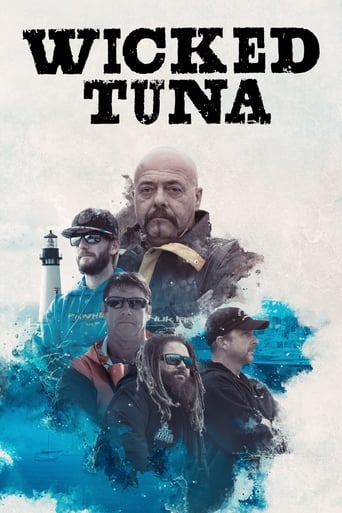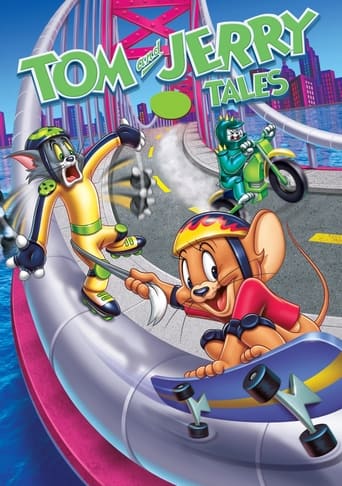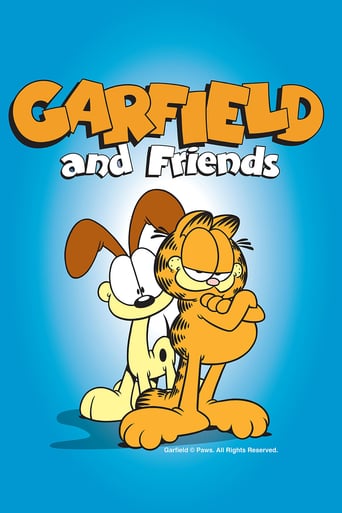Tom and Jerry Season 1940
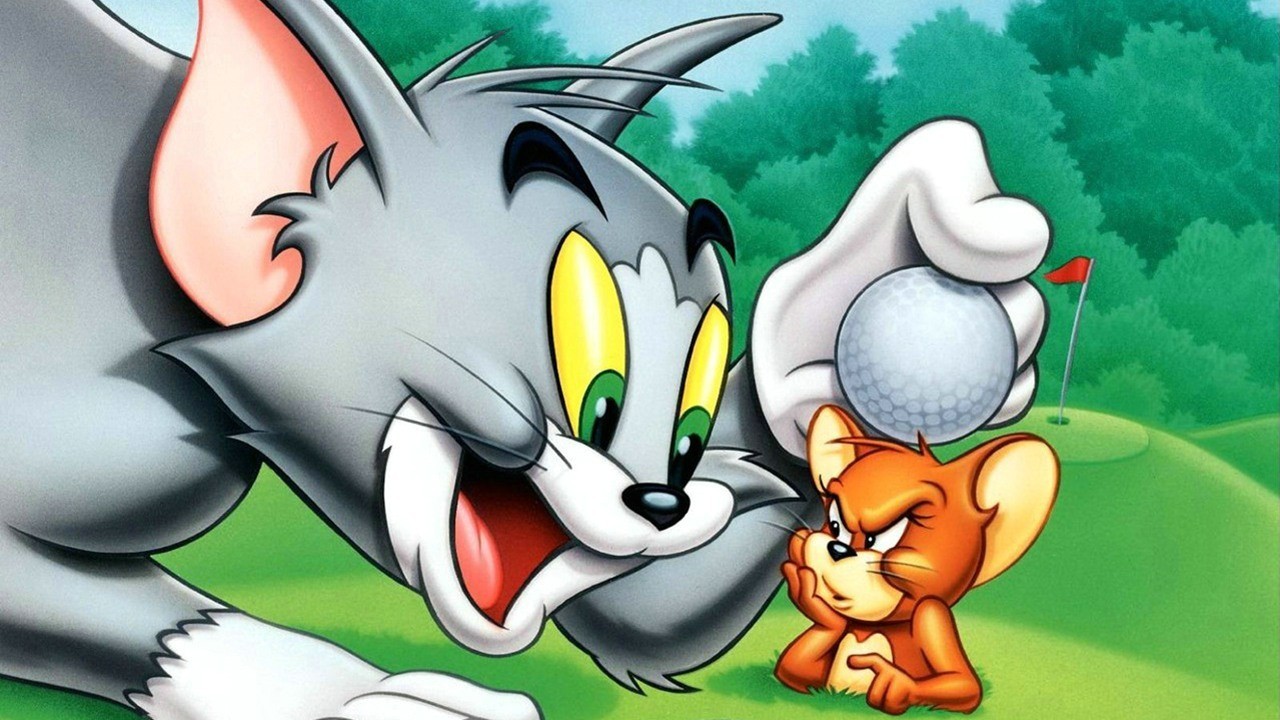
Tom and Jerry is a series of theatrical animated cartoon films created by William Hanna and Joseph Barbera for Metro-Goldwyn-Mayer, centering on a rivalry between a cat and a mouse whose chases include slapstick comedy.
Watch NowWith 30 Day Free Trial!
Tom and Jerry
1940 / NR
Tom and Jerry is a series of theatrical animated cartoon films created by William Hanna and Joseph Barbera for Metro-Goldwyn-Mayer, centering on a rivalry between a cat and a mouse whose chases include slapstick comedy.
Watch Trailer
With 30 Day Free Trial!
Tom and Jerry Season 1940 Full Episode Guide
Tennis Chumps is a 1949 one-reel animated cartoon and is the 46th Tom and Jerry short released by Metro-Goldwyn-Mayer, directed by William Hanna and Joseph Barbera, and produced by Fred Quimby. The cartoon's music was scored by Scott Bradley, and the footage was animated by Ray Patterson, Irven Spence, Ed Barge and Kenneth Muse. It is the last cartoon to be produced in the 1940s.
Tennis Chumps is a 1949 one-reel animated cartoon and is the 46th Tom and Jerry short released by Metro-Goldwyn-Mayer, directed by William Hanna and Joseph Barbera, and produced by Fred Quimby. The cartoon's music was scored by Scott Bradley, and the footage was animated by Ray Patterson, Irven Spence, Ed Barge and Kenneth Muse. It is the last cartoon to be produced in the 1940s.
Jerry's Diary is a 1949 one-reel animated cartoon and is the 45th Tom and Jerry short released by Metro-Goldwyn-Mayer, directed by William Hanna and Joseph Barbera, produced by Fred Quimby, scored by Scott Bradley, and animated by Kenneth Muse and Ed Barge. It is the first of several wrap-around T&J shorts, integrating footage from previous shorts into the plot.
Jerry's Diary is a 1949 one-reel animated cartoon and is the 45th Tom and Jerry short released by Metro-Goldwyn-Mayer, directed by William Hanna and Joseph Barbera, produced by Fred Quimby, scored by Scott Bradley, and animated by Kenneth Muse and Ed Barge. It is the first of several wrap-around T&J shorts, integrating footage from previous shorts into the plot.
Love That Pup is a 1949 one-reel animated cartoon and is the 44th Tom and Jerry short released by Metro-Goldwyn-Mayer, directed by William Hanna and Joseph Barbera, produced by Fred Quimby, music scored by Scott Bradley, and animated by Ed Barge, Ray Patterson, Irven Spence and Kenneth Muse.
Love That Pup is a 1949 one-reel animated cartoon and is the 44th Tom and Jerry short released by Metro-Goldwyn-Mayer, directed by William Hanna and Joseph Barbera, produced by Fred Quimby, music scored by Scott Bradley, and animated by Ed Barge, Ray Patterson, Irven Spence and Kenneth Muse.
The Cat and the Mermouse is a 1949 American one-reel animated cartoon and is the 43rd Tom and Jerry short directed by William Hanna and Joseph Barbera and produced by Fred Quimby. It was animated by Kenneth Muse, Ed Barge, Ray Patterson, Irven Spence and Al Grandmain, scored by Scott Bradley, and released on September 3, 1949.
The Cat and the Mermouse is a 1949 American one-reel animated cartoon and is the 43rd Tom and Jerry short directed by William Hanna and Joseph Barbera and produced by Fred Quimby. It was animated by Kenneth Muse, Ed Barge, Ray Patterson, Irven Spence and Al Grandmain, scored by Scott Bradley, and released on September 3, 1949.
Heavenly Puss is a 1949 one-reel animated cartoon and is the 42nd Tom and Jerry short, created in 1948, and released on 9 July 1949. It was directed by William Hanna and Joseph Barbera, and produced by Fred Quimby. The cartoon's music was composed by Scott Bradley and the animation was credited to Ray Patterson, Irven Spence, Kenneth Muse and Ed Barge.
Heavenly Puss is a 1949 one-reel animated cartoon and is the 42nd Tom and Jerry short, created in 1948, and released on 9 July 1949. It was directed by William Hanna and Joseph Barbera, and produced by Fred Quimby. The cartoon's music was composed by Scott Bradley and the animation was credited to Ray Patterson, Irven Spence, Kenneth Muse and Ed Barge.
Hatch Up Your Troubles is a 1949 one-reel animated cartoon made in 1948 and is the 41st Tom and Jerry short produced by Fred Quimby and directed by William Hanna and Joseph Barbera, with musical supervision by Scott Bradley and animation by Ed Barge, Ray Patterson, Irven Spence and Kenneth Muse. The cartoon was produced in Technicolor and released to theatres on May 14, 1949 by Metro-Goldwyn Mayer. In 1955, the cartoon was remade and then rereleased in CinemaScope, titled "The Egg and Jerry".
Hatch Up Your Troubles is a 1949 one-reel animated cartoon made in 1948 and is the 41st Tom and Jerry short produced by Fred Quimby and directed by William Hanna and Joseph Barbera, with musical supervision by Scott Bradley and animation by Ed Barge, Ray Patterson, Irven Spence and Kenneth Muse. The cartoon was produced in Technicolor and released to theatres on May 14, 1949 by Metro-Goldwyn Mayer. In 1955, the cartoon was remade and then rereleased in CinemaScope, titled "The Egg and Jerry".
The Little Orphan is a 1949 American one-reel animated cartoon and is the 40th Tom and Jerry short, released in theatres on April 30, 1949 by Metro-Goldwyn Mayer. It was produced by Fred Quimby and directed by William Hanna and Joseph Barbera, with music by Scott Bradley. The cartoon was animated by Irven Spence, Kenneth Muse, Ed Barge and Ray Patterson. The Little Orphan won the 1948 Academy Award for Best Short Subject: Cartoons, this being the fifth Oscar given to the cat and mouse team. Though the cartoon was released in 1949, it won its Oscar the previous year. This may have been because it was given a short run at a cinema in 1948 to qualify it for that year's Academy Award.
The Little Orphan is a 1949 American one-reel animated cartoon and is the 40th Tom and Jerry short, released in theatres on April 30, 1949 by Metro-Goldwyn Mayer. It was produced by Fred Quimby and directed by William Hanna and Joseph Barbera, with music by Scott Bradley. The cartoon was animated by Irven Spence, Kenneth Muse, Ed Barge and Ray Patterson. The Little Orphan won the 1948 Academy Award for Best Short Subject: Cartoons, this being the fifth Oscar given to the cat and mouse team. Though the cartoon was released in 1949, it won its Oscar the previous year. This may have been because it was given a short run at a cinema in 1948 to qualify it for that year's Academy Award.
Polka-Dot Puss is a 1949 one-reel animated cartoon and is the 39th Tom and Jerry short produced in 1948 and released on February 26, 1949. The short was directed by Tom and Jerry's creators, William Hanna and Joseph Barbera, produced by Fred Quimby, animated by Kenneth Muse, Ed Barge, Ray Patterson and Irven Spence, and scored by Scott Bradley, who here did an early version of the duo's recognizable iconic theme tune that would continue to be used in their cartoons throughout the 50's and 60's.
Polka-Dot Puss is a 1949 one-reel animated cartoon and is the 39th Tom and Jerry short produced in 1948 and released on February 26, 1949. The short was directed by Tom and Jerry's creators, William Hanna and Joseph Barbera, produced by Fred Quimby, animated by Kenneth Muse, Ed Barge, Ray Patterson and Irven Spence, and scored by Scott Bradley, who here did an early version of the duo's recognizable iconic theme tune that would continue to be used in their cartoons throughout the 50's and 60's.
Mouse Cleaning is a 1948 one-reel animated cartoon and is the 38th Tom and Jerry short. The title is a play on "house cleaning". It was produced in Technicolor and released to theatres on December 11, 1948 by Metro-Goldwyn Mayer. It was animated by Ray Patterson, Irven Spence, Kenneth Muse and Ed Barge, who were the usual animators for the Tom and Jerry cartoons in the early 1940s up until the late 1950s. As per most Tom and Jerry cartoons, it was directed by William Hanna and Joseph Barbera, and produced by Fred Quimby; no writer is credited. The music was scored by Scott Bradley and the backgrounds were by Robert Gentle.
Mouse Cleaning is a 1948 one-reel animated cartoon and is the 38th Tom and Jerry short. The title is a play on "house cleaning". It was produced in Technicolor and released to theatres on December 11, 1948 by Metro-Goldwyn Mayer. It was animated by Ray Patterson, Irven Spence, Kenneth Muse and Ed Barge, who were the usual animators for the Tom and Jerry cartoons in the early 1940s up until the late 1950s. As per most Tom and Jerry cartoons, it was directed by William Hanna and Joseph Barbera, and produced by Fred Quimby; no writer is credited. The music was scored by Scott Bradley and the backgrounds were by Robert Gentle.
Professor Tom is a 1948 one-reel animated cartoon and is the 37th Tom and Jerry short, directed by the duo's creators William Hanna and Joseph Barbera, produced by Fred Quimby, and animated by Ray Patterson, Irven Spence, Kenneth Muse and Ed Barge.
Professor Tom is a 1948 one-reel animated cartoon and is the 37th Tom and Jerry short, directed by the duo's creators William Hanna and Joseph Barbera, produced by Fred Quimby, and animated by Ray Patterson, Irven Spence, Kenneth Muse and Ed Barge.
Old Rockin' Chair Tom is a 1948 American one-reel animated cartoon and is the 36th Tom and Jerry short directed by William Hanna and Joseph Barbera and produced by Fred Quimby. It was animated by Ed Barge, Kenneth Muse, Ray Patterson and Irven Spence and was released to theaters on September 18, 1948. This cartoon has the longest Mammy Two Shoes on screen appearance. It even features the first appearance of Lightning in a theatrical release of a Tom and Jerry cartoon.
Old Rockin' Chair Tom is a 1948 American one-reel animated cartoon and is the 36th Tom and Jerry short directed by William Hanna and Joseph Barbera and produced by Fred Quimby. It was animated by Ed Barge, Kenneth Muse, Ray Patterson and Irven Spence and was released to theaters on September 18, 1948. This cartoon has the longest Mammy Two Shoes on screen appearance. It even features the first appearance of Lightning in a theatrical release of a Tom and Jerry cartoon.
The Truce Hurts is a 1947 one-reel animated cartoon and is the 35th Tom and Jerry short. It was produced in Technicolor and released to theatres on July 17, 1948 by Metro-Goldwyn Mayer. The title is a pun on the phrase "the truth hurts".
The Truce Hurts is a 1947 one-reel animated cartoon and is the 35th Tom and Jerry short. It was produced in Technicolor and released to theatres on July 17, 1948 by Metro-Goldwyn Mayer. The title is a pun on the phrase "the truth hurts".
Kitty Foiled is a 1948 one-reel animated cartoon and is the 34th Tom and Jerry short. It was released in theaters on June 1, 1948. The cartoon was directed by William Hanna and Joseph Barbera, with animation by Irven Spence, Kenneth Muse, Irving Levine and Ed Barge. The music was scored by Scott Bradley, and the cartoon produced by Fred Quimby.
Kitty Foiled is a 1948 one-reel animated cartoon and is the 34th Tom and Jerry short. It was released in theaters on June 1, 1948. The cartoon was directed by William Hanna and Joseph Barbera, with animation by Irven Spence, Kenneth Muse, Irving Levine and Ed Barge. The music was scored by Scott Bradley, and the cartoon produced by Fred Quimby.
The Invisible Mouse is a 1947 American one-reel animated cartoon and is the 33rd Tom and Jerry short directed by William Hanna and Joseph Barbera and produced by Fred Quimby. It was released on September 27, 1947.
The Invisible Mouse is a 1947 American one-reel animated cartoon and is the 33rd Tom and Jerry short directed by William Hanna and Joseph Barbera and produced by Fred Quimby. It was released on September 27, 1947.
A Mouse in the House is a 1947 one-reel animated cartoon and is the 32nd Tom and Jerry short directed by William Hanna and Joseph Barbera and produced by Fred Quimby. It was animated by Kenneth Muse, Ed Barge, Richard Bickenbach, Don Patterson and Michael Lah, and was released to theatres on August 30, 1947. The title of this cartoon is an appropriate play on "a guest in the house."
A Mouse in the House is a 1947 one-reel animated cartoon and is the 32nd Tom and Jerry short directed by William Hanna and Joseph Barbera and produced by Fred Quimby. It was animated by Kenneth Muse, Ed Barge, Richard Bickenbach, Don Patterson and Michael Lah, and was released to theatres on August 30, 1947. The title of this cartoon is an appropriate play on "a guest in the house."
Salt Water Tabby is a 1947 one-reel animated cartoon and is the 31st Tom and Jerry short. It was produced in Technicolor and released to theatres on July 12, 1947 by Metro-Goldwyn Mayer. The cartoon was animated by Ed Barge, Michael Lah and Kenneth Muse, with uncredited animation by Ray Patterson. Salt Water Tabby was scored by Scott Bradley, produced by Fred Quimby, and directed and written by William Hanna and Joseph Barbera. The cartoon's title is a pun on salt water taffy, a type of candy, and the common tabby cat.
Salt Water Tabby is a 1947 one-reel animated cartoon and is the 31st Tom and Jerry short. It was produced in Technicolor and released to theatres on July 12, 1947 by Metro-Goldwyn Mayer. The cartoon was animated by Ed Barge, Michael Lah and Kenneth Muse, with uncredited animation by Ray Patterson. Salt Water Tabby was scored by Scott Bradley, produced by Fred Quimby, and directed and written by William Hanna and Joseph Barbera. The cartoon's title is a pun on salt water taffy, a type of candy, and the common tabby cat.
Dr. Jekyll and Mr. Mouse is a 1947 American one-reel animated cartoon and is the 30th Tom and Jerry short. The cartoon was released on 14 June 1947, and was directed by William Hanna and Joseph Barbera, produced by Fred Quimby and animated by Ed Barge, Michael Lah, Kenneth Muse and Al Grandmain. The episode is a parody of Dr. Jekyll and Mr. Hyde. It was nominated for the Academy Award for Best Short Subject: Cartoons in 1947, but lost to Warner Bros. Tweetie Pie, ending their streak of 4 consecutive wins.
Dr. Jekyll and Mr. Mouse is a 1947 American one-reel animated cartoon and is the 30th Tom and Jerry short. The cartoon was released on 14 June 1947, and was directed by William Hanna and Joseph Barbera, produced by Fred Quimby and animated by Ed Barge, Michael Lah, Kenneth Muse and Al Grandmain. The episode is a parody of Dr. Jekyll and Mr. Hyde. It was nominated for the Academy Award for Best Short Subject: Cartoons in 1947, but lost to Warner Bros. Tweetie Pie, ending their streak of 4 consecutive wins.
The Cat Concerto is a 1947 American one-reel animated cartoon and is the 29th Tom and Jerry short, produced in 1946 and released to theatres on April 26, 1947 and reissued for a re-release in 1955 by Metro-Goldwyn Mayer. It was produced by Fred Quimby and directed by William Hanna and Joseph Barbera, with musical supervision by Scott Bradley, and animation by Kenneth Muse, Ed Barge and Irven Spence. It won the 1946 Academy Award for Best Short Subject: Cartoons. In 1994 it was voted #42 of the 50 Greatest Cartoons of all time by members of the animation field. The short won the duo their fourth consecutive Academy Award for Best Animated Short Film.
The Cat Concerto is a 1947 American one-reel animated cartoon and is the 29th Tom and Jerry short, produced in 1946 and released to theatres on April 26, 1947 and reissued for a re-release in 1955 by Metro-Goldwyn Mayer. It was produced by Fred Quimby and directed by William Hanna and Joseph Barbera, with musical supervision by Scott Bradley, and animation by Kenneth Muse, Ed Barge and Irven Spence. It won the 1946 Academy Award for Best Short Subject: Cartoons. In 1994 it was voted #42 of the 50 Greatest Cartoons of all time by members of the animation field. The short won the duo their fourth consecutive Academy Award for Best Animated Short Film.
Part Time Pal is a 1947 American one-reel animated cartoon and is the 28th Tom and Jerry short. It was animated by Michael Lah, Kenneth Muse, Ed Barge, Pete Burness and Ray Patterson, produced in Technicolor by Fred Quimby, directed by William Hanna and Joseph Barbera, and released to theaters on March 15, 1947 by Metro-Goldwyn Mayer. Pete Burness animated around 50% of the animation in this cartoon, but he didn't receive any credit because he left the studio shortly after this cartoon was made.
Part Time Pal is a 1947 American one-reel animated cartoon and is the 28th Tom and Jerry short. It was animated by Michael Lah, Kenneth Muse, Ed Barge, Pete Burness and Ray Patterson, produced in Technicolor by Fred Quimby, directed by William Hanna and Joseph Barbera, and released to theaters on March 15, 1947 by Metro-Goldwyn Mayer. Pete Burness animated around 50% of the animation in this cartoon, but he didn't receive any credit because he left the studio shortly after this cartoon was made.
Cat Fishin' is a 1947 American one-reel animated cartoon and is the 27th Tom and Jerry short directed by William Hanna and Joseph Barbera, produced by Fred Quimby and animated by Kenneth Muse, Ed Barge, Michael Lah, Pete Burness and Ray Patterson. It was released to theatres on February 22, 1947 by Metro-Goldwyn Mayer.
Cat Fishin' is a 1947 American one-reel animated cartoon and is the 27th Tom and Jerry short directed by William Hanna and Joseph Barbera, produced by Fred Quimby and animated by Kenneth Muse, Ed Barge, Michael Lah, Pete Burness and Ray Patterson. It was released to theatres on February 22, 1947 by Metro-Goldwyn Mayer.
Solid Serenade is a 1946 one-reel animated cartoon and is the 26th Tom and Jerry short, produced in Technicolor and released to theatres on August 31, 1946 by Metro-Goldwyn Mayer. It was produced by Fred Quimby and directed by William Hanna and Joseph Barbera, with musical supervision by Scott Bradley, and animation by Ed Barge, Michael Lah and Kenneth Muse, with uncredited animation by Pete Burness and Ray Patterson. Plot: Near a house is a doghouse labeled "Killer" with a dog in it. Tom pokes his head over the wall and spots a female cat in the window. Tom brings along his double bass, then wakes up Spike and neutralizes him by whacking him in the head with a mallet and tying him up. Tom uses his bass as a pogo stick to hop over to the window, stopping halfway to taunt Spike along the way. Tom plays "Is You Is or Is You Ain't My Baby"; the sound waves from the instrument shake Jerry's mousehole, bouncing Jerry off the bed, then under the table, and Jerry's head is hit by a vase that falls off the table when the mouse comes out the other side. Having had enough, the mouse gets his revenge by going into the kitchen and hurling a pie with an iron stuffed inside; the cat is angered, but continues with a few more bars. Seconds later, he is hit in the face again – this time with a pie covered in whipped cream. Spotting Jerry, Tom chases him through the house.
Solid Serenade is a 1946 one-reel animated cartoon and is the 26th Tom and Jerry short, produced in Technicolor and released to theatres on August 31, 1946 by Metro-Goldwyn Mayer. It was produced by Fred Quimby and directed by William Hanna and Joseph Barbera, with musical supervision by Scott Bradley, and animation by Ed Barge, Michael Lah and Kenneth Muse, with uncredited animation by Pete Burness and Ray Patterson. Plot: Near a house is a doghouse labeled "Killer" with a dog in it. Tom pokes his head over the wall and spots a female cat in the window. Tom brings along his double bass, then wakes up Spike and neutralizes him by whacking him in the head with a mallet and tying him up. Tom uses his bass as a pogo stick to hop over to the window, stopping halfway to taunt Spike along the way. Tom plays "Is You Is or Is You Ain't My Baby"; the sound waves from the instrument shake Jerry's mousehole, bouncing Jerry off the bed, then under the table, and Jerry's head is hit by a vase that falls off the table when the mouse comes out the other side. Having had enough, the mouse gets his revenge by going into the kitchen and hurling a pie with an iron stuffed inside; the cat is angered, but continues with a few more bars. Seconds later, he is hit in the face again – this time with a pie covered in whipped cream. Spotting Jerry, Tom chases him through the house.
Trap Happy is a 1946 American one-reel animated cartoon and is the 25th Tom and Jerry short directed by William Hanna and Joseph Barbera and produced by Fred Quimby. It was animated by Ed Barge, Kenneth Muse, Michael Lah, Ray Patterson and Pete Burness. The music was composed by Scott Bradley. It was released to theaters on June 29, 1946 and is one of Tom and Jerry's more violent cartoons. The name of this cartoon is a pun on the term Slap happy.
Trap Happy is a 1946 American one-reel animated cartoon and is the 25th Tom and Jerry short directed by William Hanna and Joseph Barbera and produced by Fred Quimby. It was animated by Ed Barge, Kenneth Muse, Michael Lah, Ray Patterson and Pete Burness. The music was composed by Scott Bradley. It was released to theaters on June 29, 1946 and is one of Tom and Jerry's more violent cartoons. The name of this cartoon is a pun on the term Slap happy.
The Milky Waif is a 1946 American one-reel animated cartoon and is the 24th Tom and Jerry short directed by William Hanna and Joseph Barbera, produced by Fred Quimby in Technicolor, released in theaters on May 18, 1946, and re-released in theaters on January 9, 1954 by Metro-Goldwyn Mayer. It was animated by Ed Barge, Kenneth Muse and Michael Lah, with uncredited animation by Ray Patterson and Irven Spence. The name is a pun on "The Milky Way".
The Milky Waif is a 1946 American one-reel animated cartoon and is the 24th Tom and Jerry short directed by William Hanna and Joseph Barbera, produced by Fred Quimby in Technicolor, released in theaters on May 18, 1946, and re-released in theaters on January 9, 1954 by Metro-Goldwyn Mayer. It was animated by Ed Barge, Kenneth Muse and Michael Lah, with uncredited animation by Ray Patterson and Irven Spence. The name is a pun on "The Milky Way".
Springtime for Thomas is a 1946 American one-reel animated cartoon and is the 23rd Tom and Jerry short directed by William Hanna and Joseph Barbera and produced by Fred Quimby.
Springtime for Thomas is a 1946 American one-reel animated cartoon and is the 23rd Tom and Jerry short directed by William Hanna and Joseph Barbera and produced by Fred Quimby.
Quiet Please! is a 1945 American one-reel animated cartoon and is the 22nd Tom and Jerry short, which won the 1945 Academy Award for Best Short Subject: Cartoons, making it the third consecutive win the award from the series. It was produced by Fred Quimby and directed by William Hanna and Joseph Barbera, with music by Scott Bradley. The cartoon was animated by Kenneth Muse, Ray Patterson, Irven Spence, and Ed Barge. The cartoon is notable for featuring a speaking Tom, a decided rarity throughout the original series. In this film, Tom says to Jerry: "One custard pie?! Let me have it!"
Quiet Please! is a 1945 American one-reel animated cartoon and is the 22nd Tom and Jerry short, which won the 1945 Academy Award for Best Short Subject: Cartoons, making it the third consecutive win the award from the series. It was produced by Fred Quimby and directed by William Hanna and Joseph Barbera, with music by Scott Bradley. The cartoon was animated by Kenneth Muse, Ray Patterson, Irven Spence, and Ed Barge. The cartoon is notable for featuring a speaking Tom, a decided rarity throughout the original series. In this film, Tom says to Jerry: "One custard pie?! Let me have it!"
Flirty Birdy is a 1945 American one-reel animated cartoon and is the 21st Tom and Jerry short. It was also the first modern era cartoon of the cat and mouse duo and the first Tom and Jerry short to be released after World War II . It was made and released on September 22, 1945 by Metro-Goldwyn Mayer. The cartoon was directed by William Hanna and Joseph Barbera, and produced by Fred Quimby. The animation was provided by Irven Spence, Kenneth Muse, and Ray Patterson, the music by Scott Bradley, and backgrounds by Robert Gentle. The cartoon revolves around Tom's effort to regain Jerry from an eagle by dressing up as a female bird.
Flirty Birdy is a 1945 American one-reel animated cartoon and is the 21st Tom and Jerry short. It was also the first modern era cartoon of the cat and mouse duo and the first Tom and Jerry short to be released after World War II . It was made and released on September 22, 1945 by Metro-Goldwyn Mayer. The cartoon was directed by William Hanna and Joseph Barbera, and produced by Fred Quimby. The animation was provided by Irven Spence, Kenneth Muse, and Ray Patterson, the music by Scott Bradley, and backgrounds by Robert Gentle. The cartoon revolves around Tom's effort to regain Jerry from an eagle by dressing up as a female bird.
Tee for Two is a 1945 one-reel animated cartoon and is the 20th Tom and Jerry short. It was produced in Technicolor and released to theatres on July 21, 1945 by Metro-Goldwyn Mayer. The cartoon name is a pun on the phrase "Tea for two". It was the final wartime Tom and Jerry cartoon. It is also the start of the gag that whenever there is a slot machine the results are always three lemons and a whole lot of the material thrown in it is prized. Tee for Two won the 1945 Sports Award for animated sports cartoons. This is the first of four wins.
Tee for Two is a 1945 one-reel animated cartoon and is the 20th Tom and Jerry short. It was produced in Technicolor and released to theatres on July 21, 1945 by Metro-Goldwyn Mayer. The cartoon name is a pun on the phrase "Tea for two". It was the final wartime Tom and Jerry cartoon. It is also the start of the gag that whenever there is a slot machine the results are always three lemons and a whole lot of the material thrown in it is prized. Tee for Two won the 1945 Sports Award for animated sports cartoons. This is the first of four wins.
Mouse in Manhattan is a 1945 one-reel animated cartoon and is the 19th Tom and Jerry short released in American theaters on July 7, 1945 and reissued in 1953. It is one of the few episodes that only one of the duo plays a major role.
Mouse in Manhattan is a 1945 one-reel animated cartoon and is the 19th Tom and Jerry short released in American theaters on July 7, 1945 and reissued in 1953. It is one of the few episodes that only one of the duo plays a major role.
The Mouse Comes to Dinner is a 1945 American one-reel animated cartoon, the 18th Tom and Jerry short directed by William Hanna and Joseph Barbera and produced by Fred Quimby.
The Mouse Comes to Dinner is a 1945 American one-reel animated cartoon, the 18th Tom and Jerry short directed by William Hanna and Joseph Barbera and produced by Fred Quimby.
Mouse Trouble is a 1944 American one-reel animated cartoon and is the 17th Tom and Jerry short produced by Fred Quimby and directed by William Hanna and Joseph Barbera, with music by Scott Bradley. The cartoon was animated by Ray Patterson, Irven Spence, Ken Muse and Pete Burness. The cartoon won the 1944 Academy Award for Best Animated Short Film, the second consecutive award bestowed upon the series. It was released in theatres on November 23, 1944 by Metro-Goldwyn Mayer and reissued on December 12, 1951 for re-release.
Mouse Trouble is a 1944 American one-reel animated cartoon and is the 17th Tom and Jerry short produced by Fred Quimby and directed by William Hanna and Joseph Barbera, with music by Scott Bradley. The cartoon was animated by Ray Patterson, Irven Spence, Ken Muse and Pete Burness. The cartoon won the 1944 Academy Award for Best Animated Short Film, the second consecutive award bestowed upon the series. It was released in theatres on November 23, 1944 by Metro-Goldwyn Mayer and reissued on December 12, 1951 for re-release.
Puttin' on the Dog is a 1944 American one-reel animated cartoon and is the 16th Tom and Jerry short directed by William Hanna and Joseph Barbera and produced by Fred Quimby. It was released in theatres on 28 October 1944, by Metro-Goldwyn-Mayer. The cartoon was animated by Pete Burness, Ray Patterson, Irven Spence and Kenneth Muse, and the music was composed by Scott Bradley. The cartoon revolves around Tom's attempts to disguise himself as a dog in order to get his hands on Jerry who is hiding from him in a dog pound. It is sometimes thought of as a sequel to The Bodyguard.
Puttin' on the Dog is a 1944 American one-reel animated cartoon and is the 16th Tom and Jerry short directed by William Hanna and Joseph Barbera and produced by Fred Quimby. It was released in theatres on 28 October 1944, by Metro-Goldwyn-Mayer. The cartoon was animated by Pete Burness, Ray Patterson, Irven Spence and Kenneth Muse, and the music was composed by Scott Bradley. The cartoon revolves around Tom's attempts to disguise himself as a dog in order to get his hands on Jerry who is hiding from him in a dog pound. It is sometimes thought of as a sequel to The Bodyguard.
The Bodyguard is a 1944 American one-reel animated cartoon and is the 15th Tom and Jerry short directed by William Hanna and Joseph Barbera, produced by Fred Quimby and animated by Ken Muse, Ray Patterson, Irven Spence and Pete Burness. The cartoon features Spike the bulldog in his second role, though this is the first time that we hear him speak. It was produced in Technicolor and released to theatres on July 22, 1944 by Metro-Goldwyn Mayer.
The Million Dollar Cat is a 1944 one-reel animated cartoon and is the 14th Tom and Jerry short. It was produced in Technicolor and released to theatres on May 6, 1944 by Metro-Goldwyn Mayer. It was reissued for re-release in 1951. Lost original title card found.
The Zoot Cat is a 1944 American one-reel animated cartoon and is the 13th Tom and Jerry short. It was produced in Technicolor and released to theatres on February 26, 1944 by Metro-Goldwyn Mayer. The cartoon features a great deal of 1940's slang, a parody of the popular zoot suit, and some outdated features of 1930's popular culture.
Baby Puss is a 1943 one-reel animated cartoon and is the 12th Tom and Jerry short directed by William Hanna and Joseph Barbera and produced by Fred Quimby, Baby Puss was released to theaters on Christmas day, 1943 by Metro-Goldwyn Mayer. This is the first Tom and Jerry short to be animated by Ray Patterson, who arrived from Walt Disney Productions after working on The Old Army Game, a Donald Duck cartoon also released in 1943. Except some time spent at Walter Lantz Productions in the 1950s, Patterson would continue to work for Hanna and Barbera into the 1980s. The reissue opening music was Rock-a-Bye Baby
The Yankee Doodle Mouse is a 1943 American one-reel animated cartoon. It is the eleventh Tom and Jerry short produced by Fred Quimby, and directed by William Hanna and Joseph Barbera, with musical supervision by Scott Bradley and animation by Irven Spence, Pete Burness, Kenneth Muse and George Gordon. Jack Zander was credited on the original print, but his credit was omitted in the 1951 reissue. It was produced in Technicolor and released to theaters on June 26, 1943 by Metro-Goldwyn Mayer. The short features Tom the cat and Jerry the mouse chasing each other in a pseudo-warfare style, and makes numerous references to World War II technology such as jeeps and dive bombers. The Yankee Doodle Mouse won the 1943 Academy Award for Best Animated Short Film, making it the first of seven Tom and Jerry cartoons to receive this distinction.
''The Lonesome Mouse'' is a 1943 American one-reel animated cartoon and is the 10th Tom and Jerry short. This is notable for being the first speaking role of the cat and mouse duo. It was created and released in 1943, and re-released to theatres in 1950. It was directed by William Hanna and Joseph Barbera and produced by Fred Quimby. The animators of the cartoon were not credited, and this was the last instance in a Tom and Jerry cartoon that this happened. All future Tom and Jerry theatrical shorts credited the animators. This cartoon is animated by Kenneth Muse, George Gordon, Jack Zander, Irven Spence, and Pete Burness.
Sufferin' Cats! is a 1942 American one-reel animated cartoon and is the 9th Tom and Jerry short. It was produced in Technicolor and released to theatres on January 16, 1943 by Metro-Goldwyn Mayer and re-released on June 4, 1949 as a reissued version. This is the final cartoon to have Clarence Nash to do meows and screeches for any MGM cat character, including Tom Cat. After this, Tom would just yelp in pain whenever he got hurt. Tom's yelps were done by creator William Hanna. In the short's original release, the original opening theme was "Runnin' Wild". It was replaced by the later Tom & Jerry theme on re-issue. On the re-issue, the animators are credited, but on the original, only William Hanna and Joseph Barbera are credited.
Fine Feathered Friend is a 1942 one-reel animated cartoon and is the 8th Tom and Jerry short released by Metro-Goldwyn-Mayer and reissued in 1949. It was directed by William Hanna and Joseph Barbera and produced by Fred Quimby. The cartoon is set almost entirely in a barnyard, where Tom's efforts to catch Jerry are made all the more problematic by a hen and her nest of soon to be hatched chicks. It was animated by Pete Burness, Kenneth Muse, Jack Zander and George Gordon. Bill Littlejohn was credited in the original release, but his credit was omitted in the 1949 reissue. This is the first Tom and Jerry cartoon to have animation by Kenneth Muse, an ex-Disney animator who would draw the characters in the style that is remembered today. This is also the first Tom and Jerry cartoon to credit the animators. This is also the second to last cartoon featuring Clarence Nash as Tom's Screeches and Meows but was not credited. The original release opened with the "Tiger Rag" opening gag and music still seen on the one-shot cartoons Blitz Wolf and Chips Off the Old Block; this was replaced with a later Tom and Jerry theme for the reissue version.
The Bowling Alley Cat is a 1942 one-reel animated cartoon and is the 7th Tom and Jerry short. It was produced in Technicolor and released to theatres on July 18, 1942 by Metro-Goldwyn Mayer and reissued for re-release in 1948.
Puss n' Toots is a 1942 one-reel animated cartoon and is the 6th Tom and Jerry short. It was produced in Technicolor and released to theatres on May 30, 1942 by Metro-Goldwyn Mayer and re-issued in 1957. It was animated by Pete Burness, George Gordon, Jack Zander, Irven Spence, and Bill Littlejohn. The name of the short is an allusion to the fairy tale Puss 'n' Boots.
Dog Trouble is a 1942 one-reel animated cartoon and is the fifth Tom and Jerry short film. It was produced in Technicolor, released to theaters on April 18, 1942 by Metro-Goldwyn Mayer and reissued for re-release in 1952. It was animated by George Gordon, Irven Spence, Jack Zander, Cecil Surry and Bill Littlejohn.
Fraidy Cat is a 1942 one-reel animated cartoon and is the 4th Tom and Jerry short, produced by Fred Quimby for Metro-Goldwyn-Mayer and directed by William Hanna and Joseph Barbera. It was released in theaters on January 17, 1942 and re-issued in 1952 for re-release. This is the first Tom and Jerry cartoon to have Tom yelp in pain, although he also screeches like a cat in this cartoon. It was the first Tom and Jerry wartime cartoon.
The Night Before Christmas is a 1941 one-reel animated cartoon and is the 3rd Tom and Jerry short directed by William Hanna and Joseph Barbera, produced by Fred Quimby and animated by Jack Zander, George Gordon, Irven Spence and Bill Littlejohn. As was the practice in original issues of MGM animated shorts at the time, only Hanna and Barbera are credited. It was nominated for the 1941 Academy Award for Best Short Subject: Cartoons. It was released to theaters on December 6, 1941 by Metro-Goldwyn-Mayer, one day before the Japanese attack on Pearl Harbor, making it the last Tom and Jerry pre-war cartoon.
The Midnight Snack is a 1941 one-reel animated cartoon and is the 2nd Tom and Jerry short, produced in Technicolor and released to theatres on July 19, 1941 by Metro-Goldwyn Mayer and re-released on February 27, 1948 and 1957. It was produced by Fred Quimby and directed by William Hanna and Joseph Barbera, with musical supervision by Scott Bradley. This cartoon featured the second appearance of Tom and Jerry, and was the first in which the characters were named. The first cartoon, Puss Gets the Boot had the cat named Jasper, and a mouse known as Jinx. The Midnight Snack also features the black housemaid Mammy Two Shoes, voiced by Lillian Randolph, and typically ends in destruction and Tom being kicked out of the house.
Puss Gets the Boot is the first animated short subject in the Tom and Jerry series. A total of 161 entries were released by Metro-Goldwyn-Mayer between 1940 and 1967.
Free Trial Channels
Seasons









